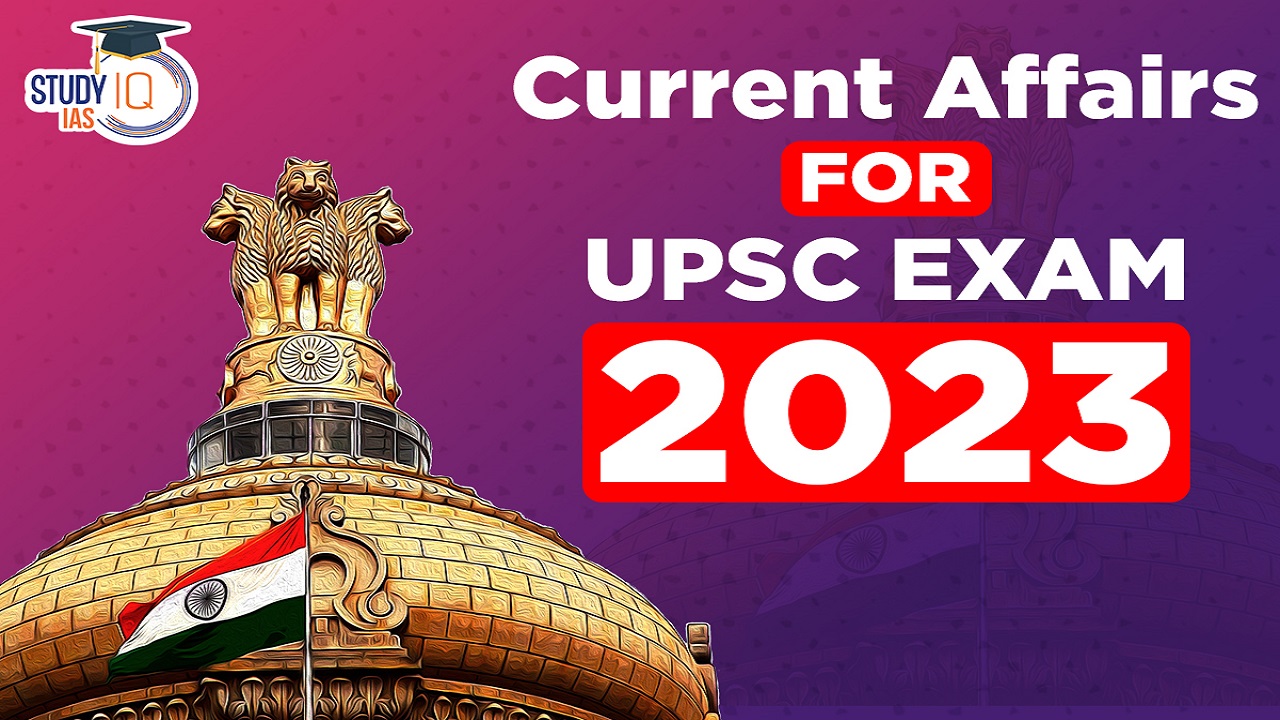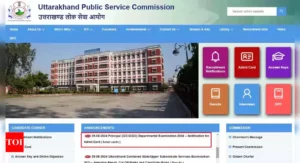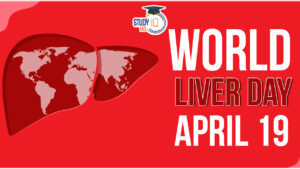Current Affairs 10th July 2023 for UPSC Prelims Exam
Women Only Courts Initiative
Context: The Centre is launching a unique initiative of setting up women-only courts at the village level as an alternate dispute resolution forum.
About Women-Only Courts Initiative (Nari Adalat)
- Alternate Dispute Resolution: It is the process by which disputes between the parties are settled or brought to an amicable result without the intervention of Judicial Institution and without any trial.
- It offers to resolve all types of matters including civil, commercial, industrial, family etc., where people are not able to start any type of negotiation and reach a settlement.
- Generally, ADR uses a neutral third party who helps the parties to communicate, discuss the differences and resolve the dispute.
- It is a mechanism of dispute resolution that is non-adversarial – working together cooperatively to reach the best resolution for everyone.
- It can be instrumental in reducing the burden of litigation on courts.
- Nari Adalat: The Centre is launching a unique initiative of setting up women-only courts at the village level as an alternate dispute resolution forum for issues like domestic violence, property rights and countering the patriarchal system.
- This initiative takes inspiration from the Parivarik Mahila Lok Adalats [People’s Court of Women] which were run by the National Commission for Women (NCW) till 2014-15.
- Implementation: The scheme would be launched on a pilot basis in 50 villages each in Assam and Jammu and Kashmir from August and would be extended to the rest of the country over the next six months.
- Detailed Standard Operating Procedures have been prepared for all States.
- Implementing Agency: The scheme would be run by the Ministry of Women and Child Development under the Sambal sub-scheme of Mission Shakti, which is dedicated to strengthening women’s safety, security and empowerment.
- The implementation process will be done in collaboration with the Ministry of Panchayati Raj, the Ministry of Rural Development and Common Service Centers operated by the Ministry of Electronics and Information technology.
- Composition: The Nari Adalat of each village would have 7-9 members.
- Half of the members would be the elected members of the gram panchayat and the other half women with social standing like teachers, doctors and social workers – who would be nominated by the villagers.
- Members known as Nyaya Sakhis [legal friends] will be nominated or selected by the gram panchayat.
- The head of Nari Adalat called the Mukhya Nyaya Sakhi [chief legal friend] will be chosen among the Nyay Sakhis.
- The tenure of the head will be generally six months after which a new one will be selected.
- Functions: Its main functions include:
- Raising awareness about the legal rights and entitlements of women and resolving cases falling within its jurisdiction.
- Alternate dispute resolution and grievance redressal, counselling, evidence-based decision making, pressure group tactics, negotiation, mediation and reconciliation with mutual consent for accessible and affordable justice.
- It will also engage with citizens, promoting awareness about women’s rights, legal opinions.
- It will also raise awareness about social schemes under the government while collecting valuable feedback to enhance the effectiveness of these initiatives.
- Legal Status: The Nari Adalat though does not hold any legal status.
- Significance: The platform of Nari Adalat leverages their potential as advisers and leaders within their communities, functioning as a pressure group.
- The Nari Adalat [women’s court] will address individual cases.
- It will cater to all women and girls who require assistance or have grievances within the local community.
Current Affairs 8th July 2023 for UPSC Prelims Exam
Ayushman Bharat Scheme
Context: The Ayushman Bharat-Health and Wellness Centres (AB-HWCs) programme is undergoing its biggest expansion of services.
About Ayushman Bharat Scheme
- Ayushman Bharat: Ayushman Bharat, a flagship scheme of Government of India, was launched n 2018 as recommended by the National Health Policy 2017.
- It aims to achieve the vision of Universal Health Coverage (UHC).
- This initiative has been designed to meet Sustainable Development Goals (SDGs) and its underlining commitment, which is to “leave no one behind.”
- Components: It has two inter-related components:
- Health and Wellness Centres (HWCs) and
- Pradhan Mantri Jan Arogya Yojana (PM-JAY).
- AB-HWCs: It is aimed at bringing in promotive, preventive, curative, palliative and rehabilitative aspects of universal health coverage.
- In 2018, the GoI announced the creation of 1,50,000 HWCs by transforming the existing Sub Centres and Primary Health Centres.
- These centres are to deliver Comprehensive Primary Health Care (CPHC) bringing healthcare closer to the homes of people.
- They cover both, maternal and child health services and non-communicable diseases, including free essential drugs and diagnostic services.
- They are envisaged to deliver an expanded range of services to address the primary health care needs of the entire population in their area, expanding access, universality and equity close to the community.
- AB-HWCs programme has grown to more than 1.6 lakh centres and registered over 178.87 crore beneficiaries in the five years since its inception.
- PM-JAY: Ayushman Bharat PM-JAY is the largest health assurance scheme in the world.
- PM-JAY was earlier known as the National Health Protection Scheme (NHPS) before being rechristened.
- Implementing Agency: National Health Authority (NHA) has been set up to implement PM-JAY.
- To implement the scheme at the State level, State Health Agencies (SHAs) in the form of a society/trust have been set up by respective States.
- AB PM-JAY is being implemented in 33 States and Union Territories (UTs) except for Delhi, Odisha, and West Bengal.
- Beneficiaries: The households included are based on the deprivation and occupational criteria of Socio-Economic Caste Census 2011 (SECC 2011) for rural and urban areas respectively.
- Funding: PM-JAY is fully funded by the Government and cost of implementation is shared between the Central and State Governments.
- Features:
- It provides a cover of Rs. 5 lakhs per family per year for secondary and tertiary care hospitalization across public and private empaneled hospitals in India.
- It provides cashless access to health care services for the beneficiary at the point of service, that is, the hospital.
- It covers up to 3 days of pre-hospitalization and 15 days post-hospitalization expenses such as diagnostics and medicines.
- There is no restriction on the family size, age or gender.
- Benefits of the scheme are portable across the country i.e. a beneficiary can visit any empaneled public or private hospital in India to avail cashless treatment.
- Public hospitals are reimbursed for the healthcare services at par with the private hospitals.
- Milestones Achieved in PM-JAY:
- Achieved a milestone of 5 crore hospital admissions.
- It has helped poor and vulnerable families by reducing the out-of-pocket expenditure for medical treatments.
- Under the scheme, a conscious effort has been made to ensure gender equity in access to quality healthcare.
- As a result approximately 49% of Ayushman Card recipients are women and over 48% of total authorized hospital admissions under AB PM-JAY scheme have been availed by women.
- Also, over 141 medical procedures under PM-JAY are exclusively earmarked for women.

LVM-3
Context: Indian Space Research Organisation (ISRO), which is planning to launch the Chandrayaan-3 moon mission in July 2023, has integrated the spacecraft with the launch vehicle — Launch Vehicle Mark-III (LVM3).
About LVM-3
- GSLV: LVM-3 was previously known as the Geosynchronous Satellite Launch Vehicle (GSLV) Mark–III.
- ISRO developed and uses the GSLV to launch heavier payloads, and if required into higher orbits.
- Like the PSLV, the GSLV also has multiple configurations.
- The most powerful configuration is LVM-3, short for ‘Launch Vehicle Mark 3’; it can lift up to 10 tonnes to low-earth orbit.
- LVM3: It is the new heavy lift launch vehicle of ISRO for achieving a 4000 kg spacecraft launching capability to GTO (Geosynchronous Transfer Orbit) in a cost effective manner.
- LVM3 is a three stage launch vehicle:
- The first (or bottom-most) stage is in the form of two S200 boosters strapped to the sides of the rocket body. They combust a solid fuel called hydroxyl-terminated polybutadiene.
- The second one liquid core stag is powered by two Vikas engines, which combust a liquid fuel – either nitrogen tetroxide or unsymmetrical dimethylhydrazine.
- The uppermost final stage is powered by a cryogenic engine. It combusts liquefied hydrogen with liquefied oxygen.
- Hydrogen has a very high specific impulse as rocket fuels go, but using it in an engine requires it to be liquefied first, which in turn means it must be stored at very low temperature, and with special pumping and transport systems.
- The powerful cryogenic stage of LVM3 enables it to place heavy payloads into Low Earth Orbits of 600 km altitude.
- The overall length of the vehicle is 43.5 m with a gross lift-off weight of 640 tonnes and a 5m-diameter payload fairing.
- The vehicle takes off with the simultaneous ignition of the two S200 boosters.
- The spacecraft is injected into a GTO (Geosynchronous Transfer Orbit) orbit of 180×36000 km at a nominal time of 974s.

Performance Grading Index for Districts (PGI-D)
Context: The Performance Grading Index for Districts (PGI-D) has been released by the Department of School Education and Literacy (DoSE&L), Ministry of Education as a combined report for 2020-21 and 2021-22.
About Performance Grading Index for Districts (PGI-D)
- Definition: PGI for District (PGI-D) has been designed to grade the performance of all districts in school education.
- Aim: The PGI-D is expected to help the state education departments to identify gaps at the district level and improve their performance in a decentralized manner.
- Ultimate objective of PGI-D is to help the districts to priorities areas for intervention in school education and thus improve to reach the highest grade.

- Process: The data is filled by districts through online portal.
- The indicator-wise PGI score shows the areas where a district needs to improve.
- Categories: The PGI-D structure comprises of total weight age of 600 points across 83 indicators, which are grouped under 6 categories viz.,
- Outcomes,
- Effective Classroom Transaction,
- Infrastructure Facilities & Student’s Entitlements,
- School Safety & Child Protection,
- Digital Learning and
- Governance Process.
- Domains: The above categories are further divided into 6 domains:
- Learning Outcomes (LO),
- Access (A),
- Infrastructure & Facilities (IF),
- Equity (E),
- Governance Process (GP) &
- Teachers Education and Training (TE&T).
- Grades: PGI-D report has 10 grades under which districts are categorized:
| Grades | Finding in the Report (2020-21 & 2021-22) |
| Daksh is the highest grade (above 90%) |
|
| Utkarsh (81%-90%) |
|
| Ati-Uttam (71%-80%) |
|
| Uttam (61%-70%) |
|
| Prachesta-1 (51%-60%) |
|
| Prachesta-2 (41%-50%) |
|
| Prachesta-3 (31%-40%) |
|
| Akanshi-1 (21% to 30%) |
|
| Akanshi-2 (11% to 20%) |
|
| Akanshi-3 (lowest grade for districts that score less than 10%0 |
|
Sangam Age
Context: Archaeologists have unearthed artifacts related to the Sangam Age at Porpanaikottai in the Pudukottai district of Tamil Nadu.
About the Sangam Age
- Sangam Age refers to the period between the 3rd century BC to the 3rd century AD in South India especially the area between the river Krishna and Tungabhadra.
- It bears the name ‘Sangam’ because the kingdom of Pandya organized assemblies where poets, bards, and writers joined from various parts of South India and these assemblies were called ‘Sangamas’.
- Eminent academics gathered at the sangams and produced best writings in the form of anthologies known as ‘the Sangam literature’.
- Sangam literature reflects the cultural, social, and political aspects of the ancient Tamil society.
Three Sangams
- According to the Tamil legends, there were three Sangams held in ancient South India popularly called Muchchangam.
- These three Sangams organized over a period of 600-700 years. However, a conclusive historical account of the first two Sangams is not available.
- The first and second Sangams are considered legends and myths by many scholars.
| Sangam | Kingdom | Place | Chairman | Literary works |
| First or Head | Pandya | Madurai | Agasthya or Shiva | No books have survived. Used Agattiyam as grammar |
| Second or middle sangam | Pandya | Kapadapuram | Initially, it was Agasthya and then his disciple Tholkapiyar took over. | Around 2000 poems were collected and compiled into Tolkappiyam. |
| Third | Pandya | Maduraii | Nakkirar | Most of the existing corpus of sangam literature was written. |
Major works in Sangam Literature
- Sangam Literature is broadly divided into 2 groups – Narrative & Didactic.
- Narrative texts are called Melkannaku/Eighteen major works consisting of Ettuthogai– Collection of 8 long poems & Pattupattu– Collection of 10 small poems. Narrative texts are considered of heroic poetry in which heroes and wars are glorified. They also give idea of state formation in South India.
- Didactic texts are called Kilkannaku/Eighteen minor works consisting of Tirukural and Naladiyar. These texts prescribe a code of conduct for kings & society. They also Mentions about social groups, occupations.
- Famous works included in Sangam literature are Tolkappiyam, Ettutogai, Pattupattu, Pathinenkil kanakku, Thirukkural, and two epics called Silappadikaram and Manimekhalai.
- Silappadikaram: Written by Ilango Adigal. It is about love affair of Kovalan, Kanaggi and Madhavi. Later, a Kannagi Cult developed in South India.
- Manimekhalai: Written by Sittalai Sattanar continues the story of Silappadikaram in next generation in which Manimekhalai is the daughter of Madhavi and Kovalan.
- Tolkappiyam: Written by Tolkappiyar was product of 2nd Sangam and it is basically a work on Tamil grammar & poetics.
- Tirrukkural: Deals with philosophy and wise maxims & was written by Tiruvallur.


 UKPSC Lower PCS Recruitment 2024: Exam D...
UKPSC Lower PCS Recruitment 2024: Exam D...
 India’s First Full-Stack Quantum Compu...
India’s First Full-Stack Quantum Compu...
 World Liver Day 2025, Theme, History, Ce...
World Liver Day 2025, Theme, History, Ce...





















